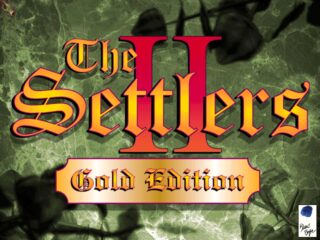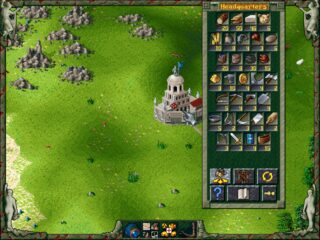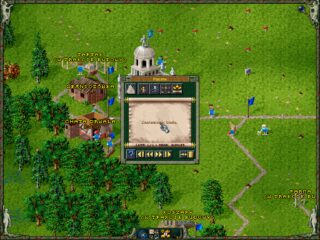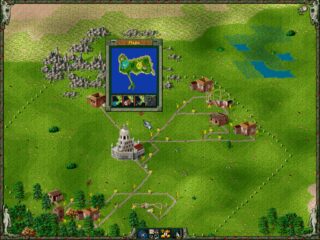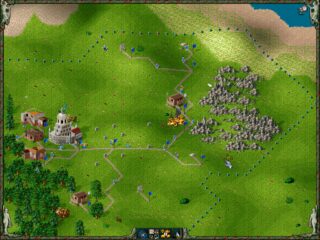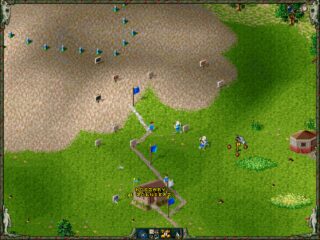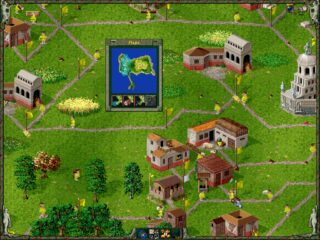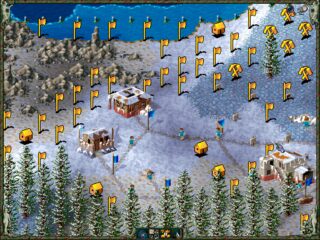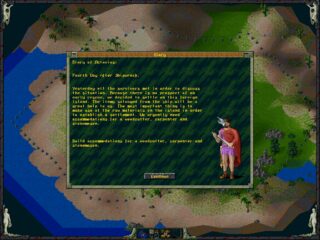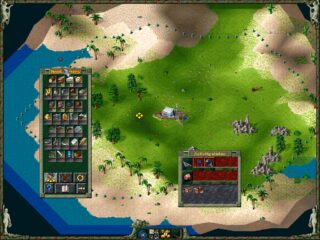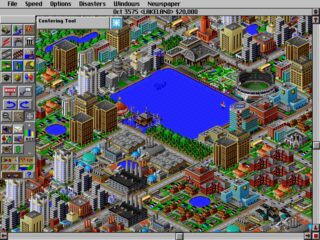The Settlers II: Veni, Vidi, Vici is a real-time strategy and city-building game developed by Blue Byte Software and released in 1996 for PC. The game was programmed and led by Thomas Häuser, building upon the innovative economic simulation concepts established by Volker Wertich in the original The Settlers.
This sequel represents a masterclass in resource management and economic simulation, focusing entirely on complex supply chains rather than traditional military conquest. You guide one of three civilizations - Romans, Vikings, or Nubians - each with unique architectural styles and minor gameplay variations. The core experience revolves around establishing intricate production networks where every resource depends on multiple others, creating a deeply satisfying web of interdependence.
The genius of The Settlers II lies in its detailed economic modeling. Iron ore requires miners, who need food from farmers, who depend on grain mills powered by millers, who require wheat from agriculturalists. Meanwhile, tools for miners come from toolsmiths who need iron bars from smelters, creating cascading supply chains that demand careful planning and constant optimization. This complexity transforms simple resource gathering into an engaging puzzle of logistics and timing.
Visually, the game features charming isometric graphics with beautifully animated sprites. Tiny settlers busily transport goods along winding paths, each carrying specific resources with distinctive visual representations. The attention to detail is remarkable - you can watch individual workers going about their daily routines, from fishermen casting nets to bakers carrying fresh bread. This visual feedback makes the abstract economic systems feel tangible and alive.
The three civilizations offer meaningful variety beyond cosmetic differences. Romans excel at road-building and efficient transport, Vikings possess superior military units and hunting capabilities, while Nubians benefit from enhanced farming and unique architectural advantages. These distinctions encourage different strategic approaches and provide excellent replay value.
Combat, while present, takes a backseat to economic development. Military units require substantial resource investment and serve primarily to secure territory and eliminate computer opponents rather than engage in complex tactical battles. This design choice reinforces the game's focus on peaceful expansion and economic mastery.
The AI opponents provide reasonable challenges, establishing their own settlements and competing for limited resources and territory. Maps feature varied terrain types that influence settlement placement and resource availability, from mountainous regions rich in minerals to coastal areas perfect for fishing operations.
Perhaps most impressively, The Settlers II achieves that elusive "just one more building" addictive quality that defines great city builders. The constant stream of small decisions and incremental improvements creates a hypnotic rhythm that can easily consume entire afternoons.
The Settlers II stands as one of the finest economic simulation games ever created, proving that warfare isn't necessary for engaging strategy gaming. Its influence can be seen in countless city builders and economic sims that followed, from Anno 1602 to modern titles. For players seeking deep, thoughtful strategy focused on creation rather than destruction, few games match its elegant complexity and enduring appeal.

